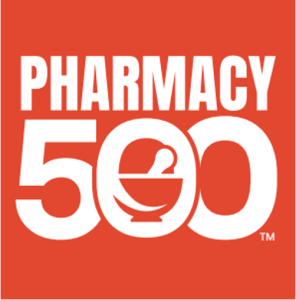How Formulary Status Affects Claim Responses and Reimbursement
Have you ever wondered why payers will reject some claims, adjudicate others with profits, or respond on some with losses? The answer may lay with whether the medications’ NDC (National Drug Code) is on the payer’s formulary list. If it is on the list, what tier is it on and is it a preferred medication? The answer may affect the reimbursement amount and patient copay assignments.
A formulary is a list of prescription drugs covered by a prescription drug plan or another insurance plan offering prescription drug benefits1. Within a formulary, there is typically a preferred list and a non-preferred list. NDC’s are categorized into these tiers based on how much the payer will cover for that medication.
Let’s take a closer look at what a formulary is and what variables may cause a claim to reject, adjudicate with profits, or adjudicate with losses.
Formulary/Preferred
Tier 1: Most generic NDCs are considered preferred. Claims will adjudicate when a formulary NDC has been used, barring other factors which may cause the claim to reject. Patient copays are the lowest in Tier 1.2
Tier 2: Preferred brand NDCs fall within this category. Preferred brand reimbursements will reflect contract rates barring any other factors which could reduce reimbursements. Patient copays in this tier will be higher than in Tier 1.3
If a claim adjudicated, but the reimbursement rate is higher than expected, and your profits are lower than expected, it may be because the NDC is on the payer’s formulary but it is on non-preferred tier.
Net-Rx™ is a provider of pharmacy reimbursement solutions exclusively for pharmacies. Our advanced business analytics platform, Metric-Rx®, combines multiple data sources to reveal key performance indicators such as reimbursement, profitability, utilization, and trends. The Metric-Rx Claims Data Extract tool helps identify claims which have been reimbursed below the contracted rate due to formulary tier level concerns.
Formulary/Non-preferred:
Tier 2: Many non-preferred generic NDCs will end up in this tier and could result in low profits or losses. Patient copays will be higher than Formulary Preferred Tier 13.
Tier 3: Some non-preferred generic, most non-preferred brands, and some preferred brand NDCs land in Tier 3. Newer NDCs, and NDCs with alternate NDCs in a lower tier will fall into this category also. Claim reimbursements for non-preferred NDCs will likely adjudicate with losses. Preferred brand claim reimbursements could result in low profits. Patient copays will be higher than Tier 1 and Tier 2.3
Tier 4: Some specialty non-preferred brands, preferred brands, and non-preferred generic NDCs will be in Tier 4. NDCs used for treating rare medical conditions fall within this tier and usually cost the pharmacy more than other NDCs. Patient copays will be the highest within this tier with variable claim profits.3
In addition to Metric-Rx, Net-Rx has an enhanced claims editing service, EditRx, that uses propriety analytics along with the support of a pharmacy reimbursement trained analyst to detect under-reimbursed claims.
The EditRx DAW/Generic Utilization report helps to identify when a claim was incorrectly paid at the generic rate instead of at the brand rate, which may indicate a non-preferred NDC has been utilized.
The EditRx Low Margin report identifies claims in which a non-preferred or a lower-tier covered NDC was used, resulting in reduced reimbursement.
Non-formulary: Whenever you use an NDC that is not on the payer’s formulary list, the NDC is considered non-formulary and the claim may be rejected. Payers will often refer the pharmacy to the formulary/preferred NDCs list.
Having a good understanding of formulary preferred NDCs vs. formulary non-preferred NDCs is integral to maximizing your claim reimbursements. Armed with this knowledge you’ll be able to keep a closer eye on your bottom line by quickly catching claims submitted with non-preferred (higher tier) NDCs.







